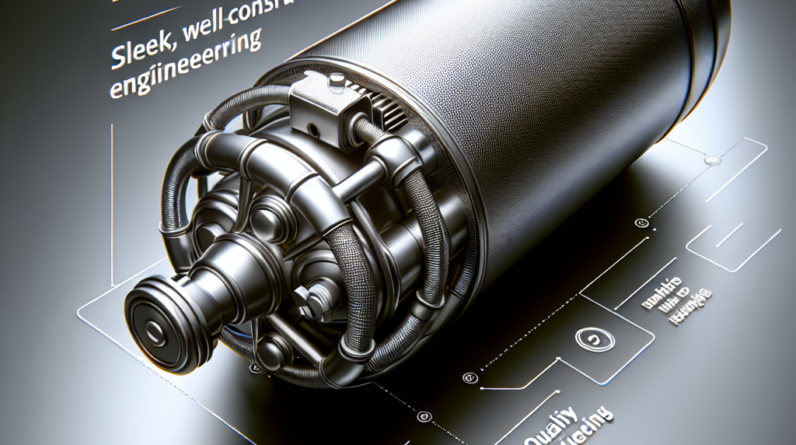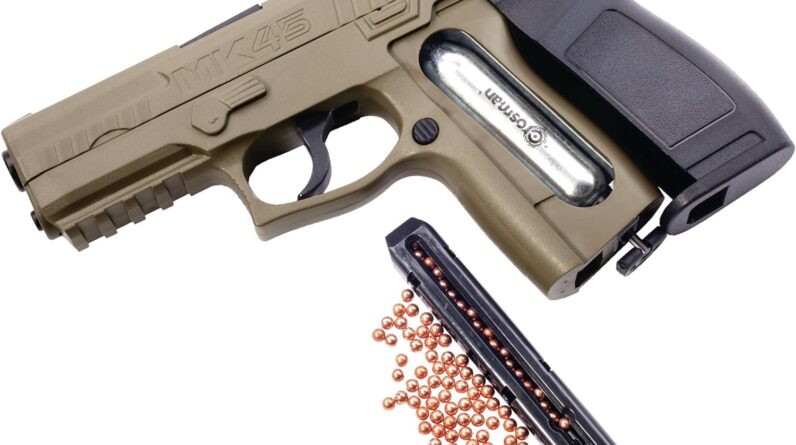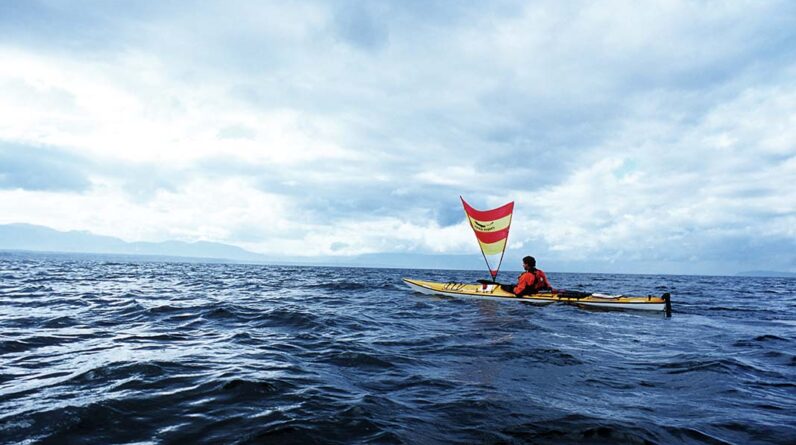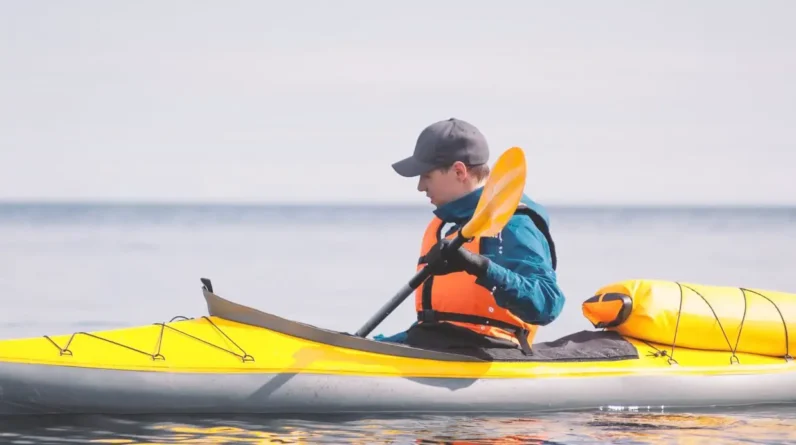
Are you an avid kayaker looking to enhance your safety on the water? If so, then choosing the perfect kayak paddle float is essential. Whether you’re a beginner or an experienced paddler, the right size and style of paddle float can make a world of difference when it comes to stability and balance in emergency situations. In this article, we will provide you with tips and insights on how to choose the ideal kayak paddle float that suits your needs and preferences. So, let’s get started on this exciting journey towards finding the perfect paddle float for your next kayaking adventure!
Factors to Consider
When it comes to choosing the perfect kayak paddle float, there are several important factors to consider. Each factor plays a crucial role in determining the effectiveness and usability of the paddle float. By carefully evaluating these factors, you can ensure that you select a paddle float that meets your specific needs and enhances your kayaking experience.
Size and Weight Capacity
The size and weight capacity of a kayak paddle float are crucial factors to consider. It is essential to choose a paddle float that is suitable for your kayak and body size. A paddle float that is too small may not provide enough buoyancy, while one that is too large may be difficult to maneuver.
To ensure a proper fit, measure your kayak’s cockpit size and choose a paddle float that fits snugly. Additionally, consider your weight and the weight capacity of the paddle float. It is essential to select a paddle float that can support your weight comfortably.
Material
The material used to construct a kayak paddle float plays a significant role in its durability and performance. There are several common materials used in the construction of paddle floats: nylon, vinyl, hypalon, and PVC.
Nylon is a popular choice due to its excellent strength and resistance to abrasion. It is known for its durability and ability to withstand harsh conditions. Vinyl is another commonly used material, known for its affordability and resistance to punctures. Hypalon, on the other hand, is highly resistant to chemicals and extreme temperatures, making it an excellent choice for rugged environments. PVC is a versatile material that offers a balance between durability and cost-effectiveness.
Consider your specific needs and the conditions in which you will be kayaking to determine the most appropriate material for your paddle float.
Shape and Design
The shape and design of a paddle float greatly influence its performance on the water. There are two main types of paddle float shapes: symmetrical and asymmetrical.
Symmetrical paddle floats have a uniform shape and are designed to be used on both the left and right sides of the kayak paddle. This versatility makes them ideal for beginner kayakers who may not have developed a preference for paddling on one side.
Asymmetrical paddle floats, on the other hand, are specifically designed to fit either the left or right side of the paddle. They offer a more ergonomic grip and are preferred by experienced kayakers who have developed a paddling technique on one side.
In addition to shape, consider the blade shape and shaft design of the paddle float. Different blade shapes provide varied levels of control and efficiency, while shaft designs can impact the paddle float’s weight and maneuverability.
Inflation System
The inflation system of a paddle float determines how it is filled with air and how easily it can be inflated and deflated. There are primarily three types of inflation systems: single-chamber inflation, dual-chamber inflation, and self-inflating paddle floats.
Single-chamber inflation systems require manual inflation using your mouth or a pump. They are typically more affordable and lightweight but may take longer to inflate fully.
Dual-chamber inflation systems consist of two separate air chambers, providing added safety and buoyancy. They are quicker to inflate and offer redundancy in case one chamber fails.
Self-inflating paddle floats, as the name suggests, can inflate automatically when released into the water. They offer convenience and speed but may be bulkier and require more maintenance.
Consider your preferences and the level of convenience you desire when choosing an inflation system for your paddle float.
Attachment Points
Attachment points on a paddle float allow you to secure it firmly to the kayak paddle and prevent it from slipping off during use. It is essential to choose a paddle float that has durable attachment points, such as sturdy D-rings or bungee cords.
Durable D-rings provide a reliable attachment point and ensure that the paddle float stays securely in place. Bungee cords or elastic straps offer flexibility and ease of attachment.
Consider the attachment points on your kayak paddle and choose a paddle float that can be securely attached without compromising stability or interfering with your paddling technique.
Importance of Size and Weight Capacity
Ensuring a Proper Fit
Choosing a kayak paddle float that is the right size for your kayak and body is crucial to ensure a proper fit. A paddle float that is too small may not provide enough buoyancy, while one that is too large may be difficult to maneuver.
Before purchasing a paddle float, measure the size of your kayak’s cockpit. Check the dimensions and ensure that the paddle float you choose fits snugly. This will prevent the float from sliding off or causing any unnecessary movement during use.
Considering the Weight Capacity
It is also important to consider the weight capacity of the paddle float. The weight capacity indicates the maximum weight the float can support without compromising its functionality.
Take into account your weight and any additional gear or equipment you may be carrying on your kayak. Choose a paddle float that can comfortably support your weight and ensure maximum safety and stability while on the water.

This image is property of www.kayakingnear.me.
Understanding Different Materials
Nylon
Nylon is a popular material used in the construction of kayak paddle floats. It is known for its excellent strength and resistance to abrasion. Nylon paddle floats are highly durable and can withstand harsh conditions, making them ideal for rugged environments.
Vinyl
Vinyl is another commonly used material in paddle float construction. It offers affordability and resistance to punctures. Vinyl paddle floats are lightweight and easy to transport, making them a popular choice among kayakers.
Hypalon
Hypalon is highly resistant to chemicals and extreme temperatures, making it an excellent choice for paddle floats used in challenging environments. Hypalon floats offer superior durability and perform well in rugged conditions.
PVC
PVC is a versatile material that offers a balance between durability and cost-effectiveness. It is commonly used in the construction of paddle floats due to its lightweight nature and resistance to environmental factors.
Consider the conditions in which you will be kayaking and the level of durability required when selecting a paddle float material.
Choosing the Right Shape and Design
Symmetrical vs Asymmetrical
The shape of a paddle float plays a significant role in its performance on the water. Symmetrical paddle floats have a uniform shape and can be used on both the left and right sides of the kayak paddle. They are versatile and suitable for beginners who may not have a preference for paddling on one side.
Asymmetrical paddle floats, on the other hand, are specifically designed to fit either the left or right side of the paddle. They offer a more ergonomic grip and are preferred by experienced kayakers who have developed a paddling technique on one side.
Blade Shape
The blade shape of a paddle float can impact its control and efficiency. Different blade shapes are designed for specific purposes, such as touring, whitewater, or recreational paddling.
For example, a larger blade shape provides more power and efficiency for faster propulsion, making it suitable for touring or distance paddling. On the other hand, a smaller blade shape allows for quicker and easier maneuvering, which is ideal for whitewater kayaking or navigating tight spaces.
Consider the type of kayaking you will be doing and choose a paddle float with a blade shape that complements your paddling style and goals.
Shaft Design
The design of the shaft can also influence the performance and comfort of a paddle float. Look for a shaft design that is ergonomic and offers a comfortable grip. A well-designed shaft can reduce fatigue and improve overall paddling experience.
Consider the weight and material of the shaft as well. Lightweight shafts are easier to maneuver and less taxing on your arms and shoulders during long paddling sessions.
Take into account your personal preferences and comfort when choosing the shaft design of your paddle float.
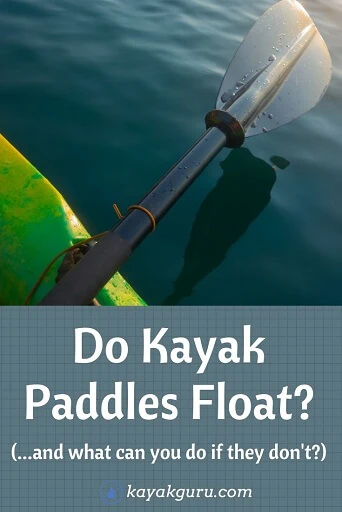
This image is property of cdn.shortpixel.ai.
Exploring Inflation Systems
Single-Chamber Inflation
Single-chamber inflation systems require manual inflation using your mouth or a pump. These are typically more affordable and lightweight options. However, they may take longer to inflate fully and require some effort on your part.
Dual-Chamber Inflation
Dual-chamber inflation systems consist of two separate air chambers. These systems offer added safety and buoyancy. In case one chamber fails, the other chamber can provide enough support to keep you afloat. Dual-chamber systems are quick to inflate and provide greater peace of mind for paddlers.
Self-Inflating Paddle Floats
Self-inflating paddle floats offer convenience and speed. These floats can automatically inflate when released into the water. They eliminate the need for manual inflation, saving you time and effort.
However, self-inflating paddle floats may be bulkier in size and require more maintenance compared to other types. Consider your priorities and preferences when deciding on an inflation system for your paddle float.
Considering Attachment Points
Durable D-Rings
Attachment points on a paddle float are crucial for securing it firmly to your kayak paddle. Look for paddle floats that have durable D-rings, which provide a reliable attachment point.
D-Rings made of sturdy materials, such as stainless steel or strong plastic, ensure that the paddle float stays securely in place during use. They offer peace of mind, knowing that the float will not detach unexpectedly.
Bungee Cords or Elastic Straps
Some paddle floats may feature bungee cords or elastic straps for attachment. These provide flexibility and ease of attachment. They allow for quick and secure attachment, ensuring that the paddle float stays in place throughout your kayaking journey.
Consider your specific needs and the attachment points available on your kayak paddle when deciding on the attachment method of your paddle float.

This image is property of www.kayakhelp.com.
Testing and Evaluating the Paddle Float
Inflating and Deflating
Before heading out on your kayaking adventure, it is important to test and evaluate the paddle float. Practice inflating and deflating the float to ensure you are familiar with its operation.
Ensure that the inflation system works smoothly and that the float fully inflates without any leaks or defects. Similarly, ensure that the deflation process is easy and efficient.
Taking the time to test the paddle float before venturing out will help you avoid any unexpected issues or difficulties on the water.
Ease of Attachment to the Paddle
Another aspect to consider is how easily the paddle float attaches to your kayak paddle. Test the attachment points and ensure that they provide a secure and stable connection.
Consider the stability of the float when attached to the paddle. Any unnecessary movement or slipping can hinder your paddling technique and compromise your safety.
By evaluating the attachment system, you can ensure that the paddle float is easy to attach and remains securely in place throughout your kayaking journey.
Useful Features to Look for
Reflective Elements
Some paddle floats may feature reflective elements, such as reflective strips or patches. These elements enhance visibility and can be especially useful during low-light conditions or in case of emergencies.
Reflective elements make you more visible to other boaters, increasing your safety on the water. Consider adding these features to your list of desired paddle float qualities.
Rescue Knife Attachment
A paddle float with a rescue knife attachment can be a valuable addition to your kayaking gear. This feature allows you to securely attach a rescue knife to the float, ensuring that it is easily accessible in case of an emergency.
A rescue knife can be used for cutting ropes, freeing entangled gear, or assisting in other water rescue situations. If safety is a top priority for you, consider choosing a paddle float with a rescue knife attachment feature.
Pocket for Essentials
Some paddle floats come with additional storage pockets or compartments. These pockets can be used to store essentials such as a whistle, compass, or small first aid kit. Having these items readily accessible can be crucial in emergency situations.
Consider whether having a storage pocket on your paddle float would benefit your kayaking adventures.

This image is property of ecpaddlesports.com.
Budget Considerations
Balancing Quality and Price
When it comes to purchasing a kayak paddle float, it is important to strike a balance between quality and price. While it may be tempting to opt for the cheapest option available, it is essential to consider the durability, performance, and safety features offered by the float.
Investing in a higher-quality paddle float ensures that you have a reliable and long-lasting piece of equipment. However, you don’t have to break the bank to find a paddle float that meets your needs. By carefully evaluating your budget and researching different options, you can find a paddle float that offers the right balance of quality and affordability.
Consider the long-term value and benefits of a high-quality paddle float, as it can enhance your kayaking experience and provide peace of mind on the water.
Conclusion
Choosing the perfect kayak paddle float requires careful consideration of various factors such as size and weight capacity, material, shape and design, inflation system, attachment points, and useful features. Each factor plays a crucial role in ensuring the paddle float’s performance, durability, and overall suitability for your kayaking needs.
By evaluating these factors and matching them to your specific preferences and requirements, you can make an informed decision and select a paddle float that enhances your safety and enjoyment on the water. Remember to test and evaluate the paddle float before using it in real kayaking situations, and always consider the balance between quality and price.
With the right kayak paddle float in your possession, you can confidently embark on kayaking adventures, knowing that you have a reliable and effective tool to assist you in the case of an emergency. Stay safe, and enjoy your time exploring the wonders of the water!
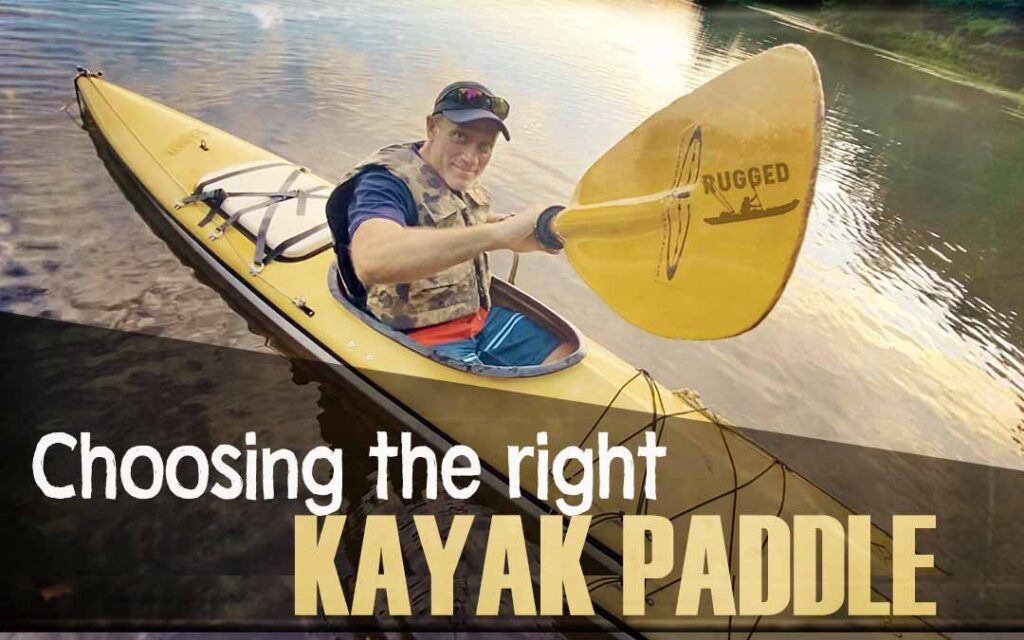
This image is property of ruggedoutdoorsguide.com.



